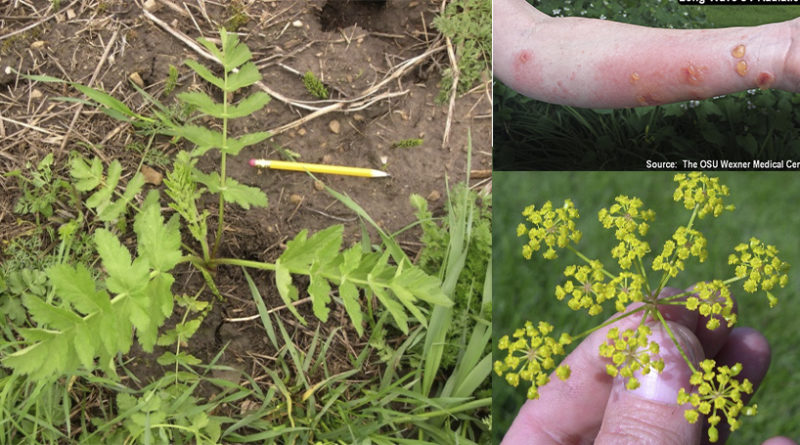County: watch out for wild parsnip
By Patrick Lynn
Wild parsnip is growing like crazy.
Also known by its scientific name, Pastinaca sativa, wild parsnip is an invasive member of the carrot family, and the spread continues, unmanaged, throughout Wisconsin, according to an agricultural expert at UW-Extension.
Ken Schroeder, an agricultural agent with UW-Extension in Portage Co., said the invasive plant grows in sunny, grassy areas alongside roads, railways, and fields, but can be found in other areas as well.
“Primary means of spread is by seed that can be moved long distances while mowing roadsides after the plant sets seed,” Schroeder said by email.
The biggest concern isn’t its invasiveness or uncontrolled spread, Schroeder said, but rather the effect wild parsnip has on the skin of humans and animals.
“It will cause burns and blistering of the skin if you come in contact with plant sap in the presence of sunlight; this is known as phytophotodermatitis. Blisters and rashes appear 24 to 48 hours after exposure. Blisters do not spread like poison ivy but are uncomfortable and may leave scars lasting for several months to two years,” he said.
The plant is monocarpic, meaning it plant dies after blooming, is perennial, and has two growth stages. In the first year, it produces a non-flowering leafy rosette of pinnately compound leaves with 5 to 15 leaflets. At this stage, Schroeder said it looks a lot like celery.
In the second to third year, it produces a flowering stem four to five feet tall. Stems are “grooved, hollow, and have alternately arranged compound leaves with 2 to 5 pairs of opposite, sharply toothed leaflets and petioles that wrap around the stems.”
Flowers are flat-topped clusters of yellow flowers 2 to 6 inches wide blooming in late spring to mid-summer in Wisconsin.
How do we manage wild parsnip?
Early detection when populations are small allows for pulling or digging. Be sure to wear gloves, long sleeves, long pants, and safety glasses or face shields to avoid skin contact with the sap. One can simply cut the taproot with a shovel or spade 1 to 2 inches below the soil surface.
With larger populations mowing is an option if done after the emergence of flower heads, but before seeds enlarge. Several chemical options also exist. For more detailed management options see the UW-Madison Extension wild parsnip management publication A3924-15.
What can I do as a Concerned Citizen to help?
- Know how to identify wild parsnip and report locations at the Wisconsin First Detectors Network website https://go.wisc.edu/4h5060. Several options are listed including a downloadable smartphone app.
- Educate others about the existence and danger of wild parsnip.
- Carry a sharp shovel or spade with you and when you see only one or a few plants consider cutting off the stems below the soil surface. As long as they haven’t gone to seed the plants can then be left to die. Check back the next year to see if additional plants emerge, and cut those too. Do not do this on private property without getting permission from the property owner.
- Encourage your local town and county to consider making a plan of action to address the wild parsnip populations in the area.
Contact Schroeder with questions at [email protected] or 715-346-1318.

